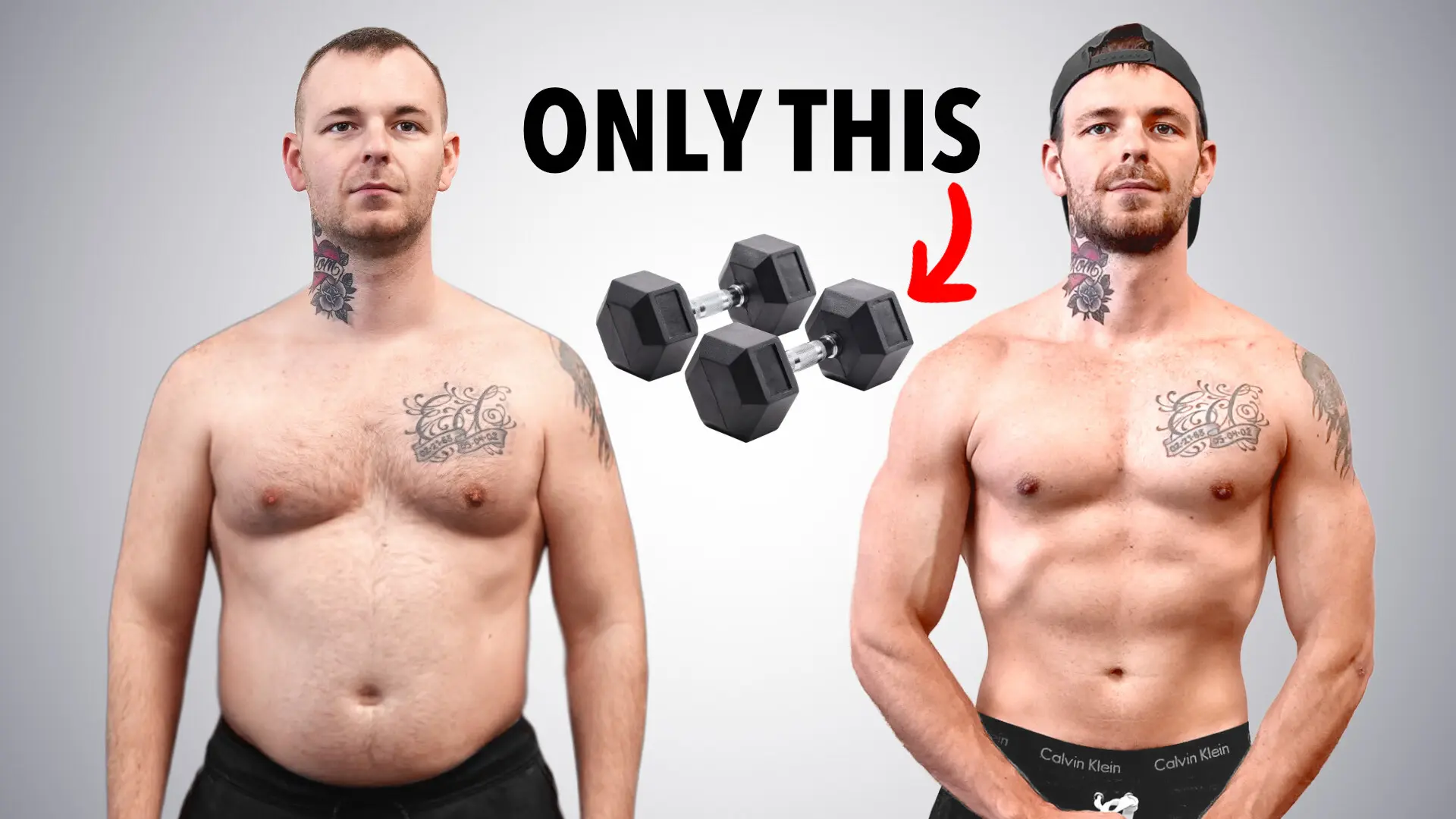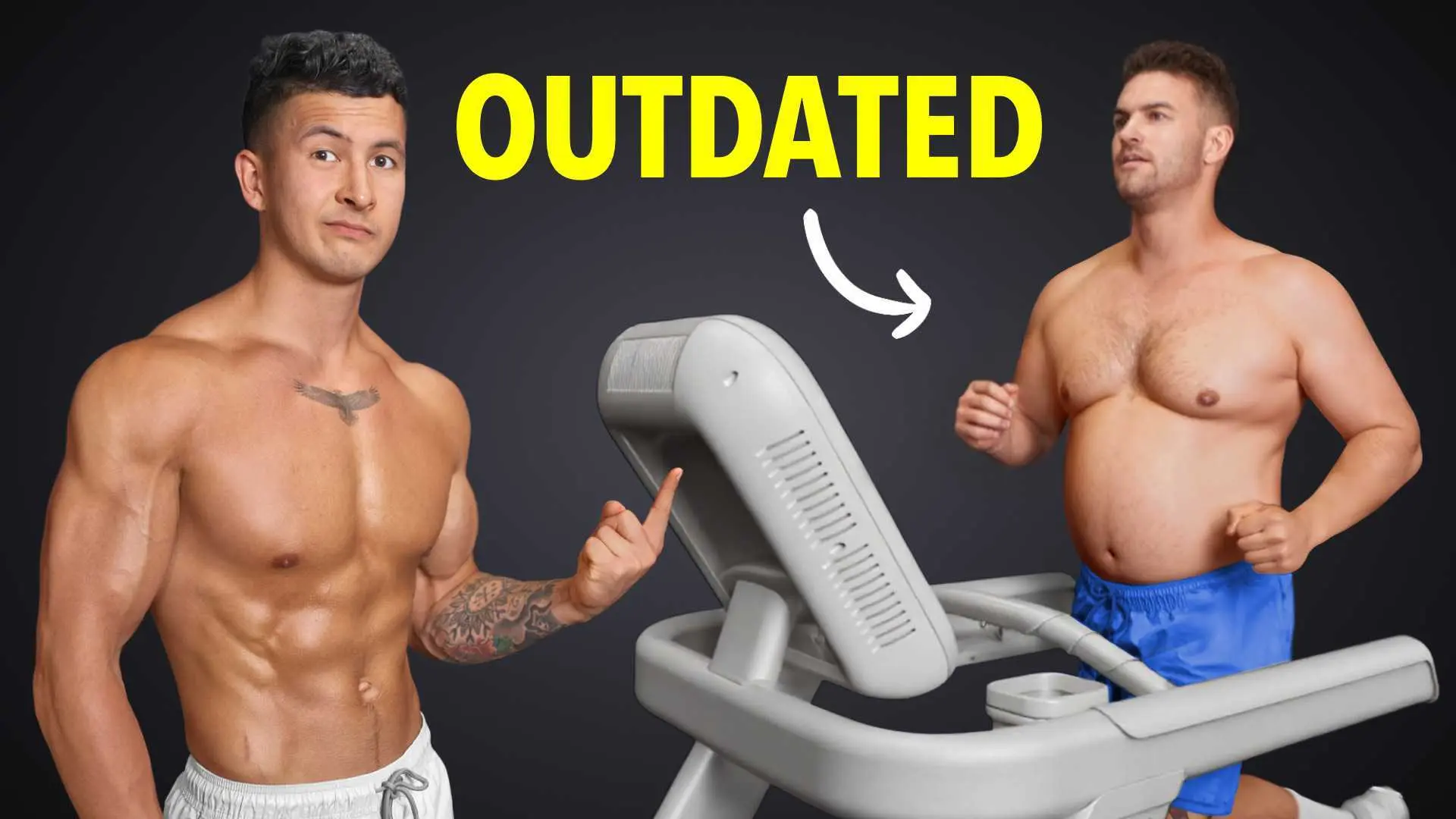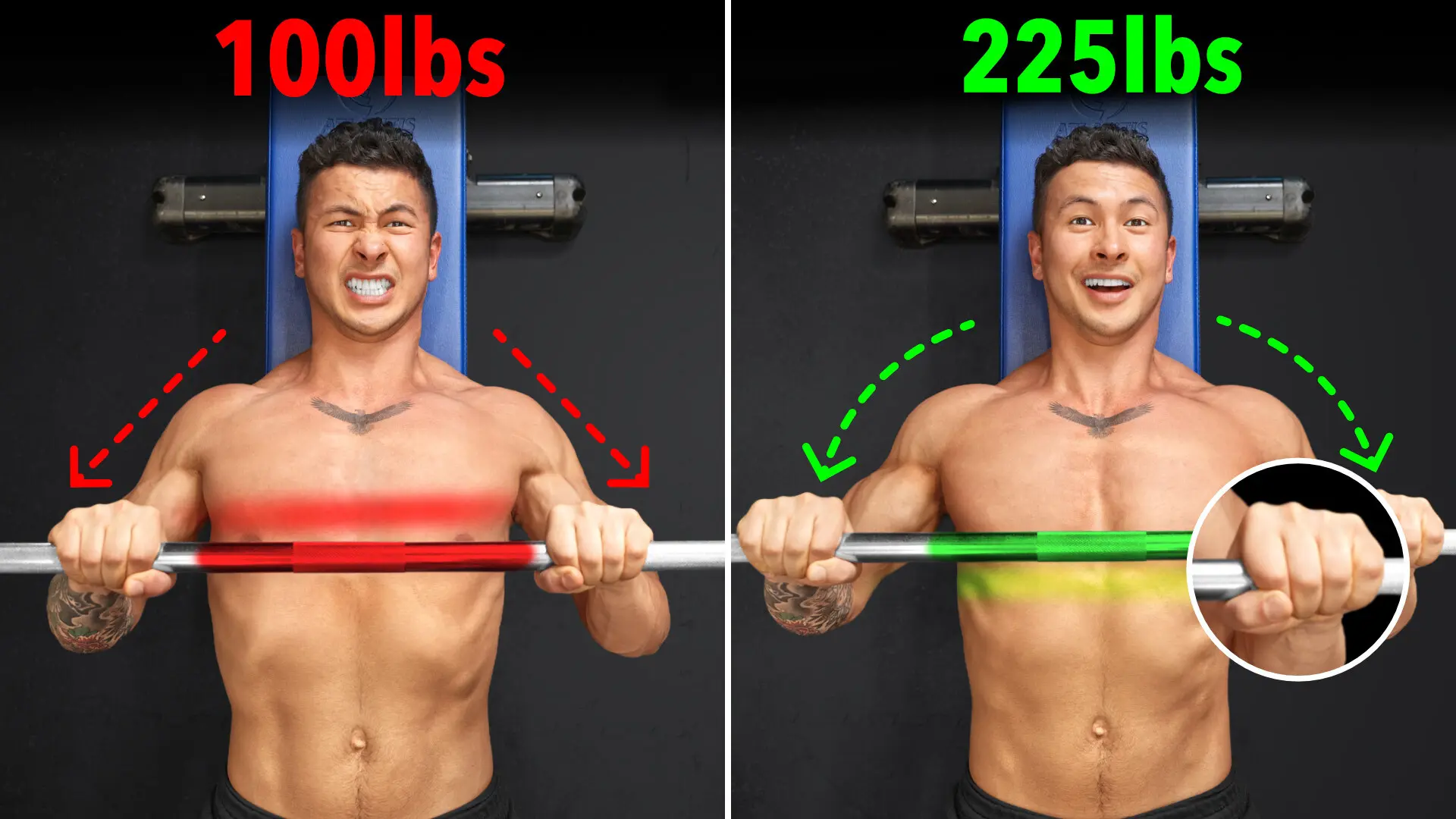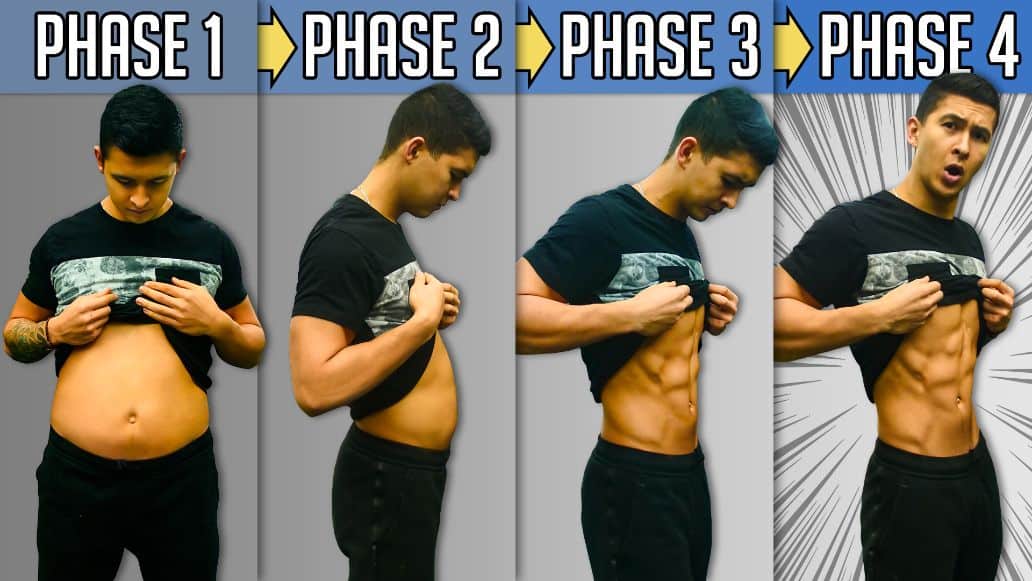
How To Diet To Lose Fat FOR GOOD (4 Phases)
If you want to find out how to strip off excess fat forever, continue reading. In this article, I cover how to diet (exactly) to lose fat in 4 simple steps.
If you’re wondering about how to diet to lose fat for good (especially around the stomach), chances are, you’ve attempted a diet of your own in the past. And you likely saw some success with it. Maybe you lost a few lbs. Or maybe you lost a ton of weight. But eventually... You reached a point where you just got stuck despite working out and dieting as hard as ever. Then, you got frustrated. And ended up gaining all that weight you initially lost right back again. And maybe you’ve even attempted to diet again afterward. But this time, even when you put in the same effort, you just can’t seem to get as lean.
I’ve seen this happen time and time again. And I’ve personally been through this series of yo-yo dieting myself.
Here's the truth. In the short-term, just about everything works. That's as long as you’re in a calorie deficit with your diet. The long term, however, is where most people fail. In fact, 8-12 week studies showing successful weight loss with pretty much every dieting approach out there exist. But when you look at long term research, only about 10-20% of those individuals are able to keep that weight off in the long run.
This is due to the fact that most people have been taught to use approaches that set themselves up for failure in the long run. Many individuals physiologically mess up their bodies with diets that leave them in a position where it’s now very hard to strip off that excess fat. And that's regardless of what they do or how hard they work.
And as I’ve said in the past, your nutrition will hands down be the most important factor when it comes to transforming your body. I used to be completely lost as to how to approach my nutrition and I know a lot of you out there are as well. This is exactly why within my Built With Science programs, I not only cover training but also stress the importance of nutrition. In fact, I even developed a custom-built nutrition software designed to optimize your diet based on your own stats and goal. For more information:
Click the button below to take my analysis quiz to discover the best program for you:
↓
How Do Diets Physiologically Mess Up Your Body?
But how does this happen, exactly? Let's understand the science with the help of Dr. Eric Trexler, a pro body-builder and Ph.D. researcher. He's an authority figure who's done a ton of work within this field.
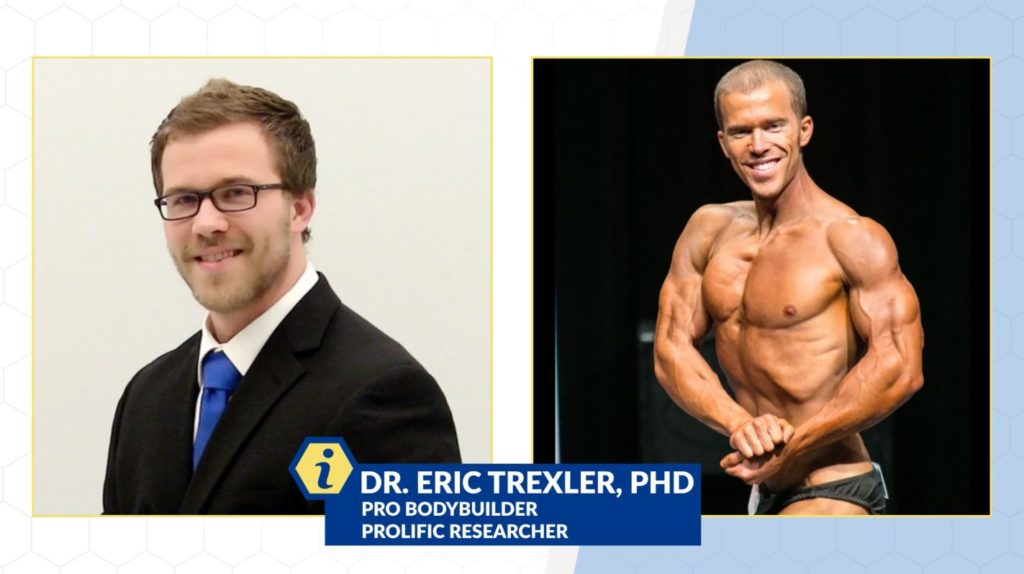
On restrictive diets, we tend to drastically cut calories and we lose a bunch of weight as a result. However, the longer we diet for and the more weight we lose, the more adaptations we experience. For example:
- Muscle loss
- Increased hunger
- Potential hormonal changes, etc.
As a result of these changes, your maintenance calories decrease. And dieting just gets harder. As you get closer to your goal weight, you get:
- Hungrier
- More lethargic
...And you have to keep reducing calories lower and lower to the point where it’s not as manageable.
At this point, people will do one of two things.
- They’ll get frustrated with the fact that they’re stuck, extremely hungry, and fatigued to the point where they’ll start overeating and bingeing out of frustration.
- Decide to try to maintain their new physique by eating at the maintenance calories they were eating at before they started the diet and lost all their weight, without knowing that their maintenance calories have dropped quite a bit in the process of their diet.
The Body Preferentially Gains Fat After Weight Loss
Both however lead to the same outcome. Because your body is primed to preferentially re-gain fat as opposed to muscle right after weight loss. And depending on how much you’ve been overeating and how much weight you initially lost, this fat gain can be so efficient to the point where you re-gain all the fat you initially lost but have not recovered your lost lean muscle mass yet.
As a result, you’re in a state where your body composition is worse than when you started. That is, you have more fat and less lean muscle mass. Not to mention, your hunger levels haven’t fully recovered so:
- You’re just constantly hungrier
- Your metabolism might be likely slightly lowered, AND
- You may be still pretty fatigued and lethargic from your diet
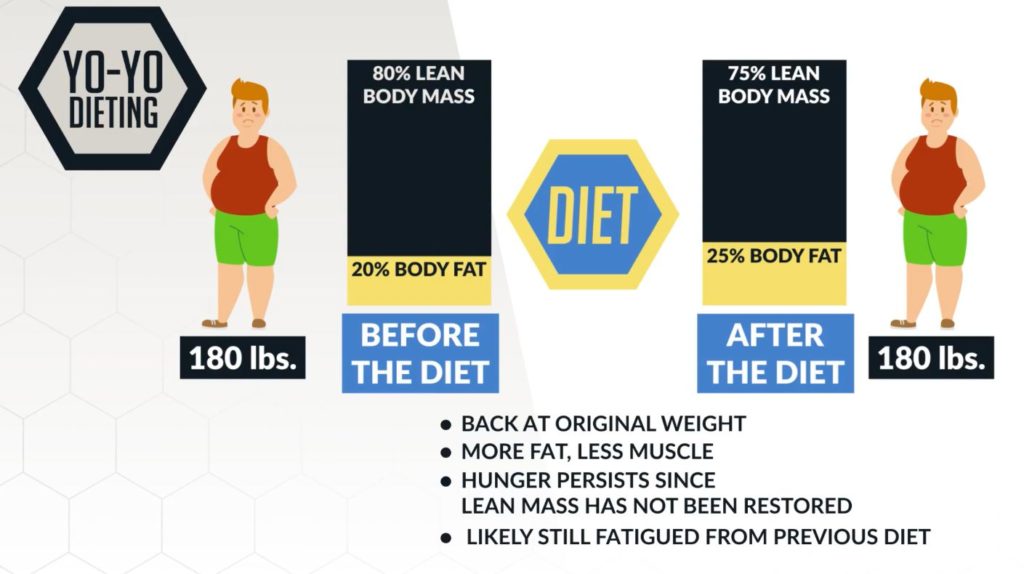
It Becomes Increasingly Difficult To Strip Off Your Body's Excess Fat
Then, at this point, most people’s reflexive reaction is to then do the diet again to strip off the fat they re-gained.
But this time, it’s even much harder to do. Why? Because you’re starting with more fat, more fatigue, and more hunger from the very start of your diet. Which just makes everything when it comes to how to diet to lose fat so much more difficult.
Now as Eric alluded to, THIS is exactly how restrictive diets leave you in a worse place every time you attempt to diet down. And literally sets you up for failure in the long run by making it harder and harder for you to strip off fat for good.
So if this sounds like you, and you’re at a point where you’ve been chronically:
- Under-eating
- Doing a ton of cardio
- Bingeing every now and then, AND
- Basically just in a cycle of yo-yo dieting
...Then you need to realize that weight loss should NOT be your priority right now. Your body isn’t ready physiologically nor psychologically. Remember, we’re talking about lifetime results here not just some 12-week weight loss program.
We need to FIRST get your body recovered back to a point where we’re now ready to start cutting calories and stimulating fat loss the right way. We want to first use something called a “recovery phase”. This will put you on the right track to now properly diet to lose fat. So that once you strip off that excess fat, it’s gone for good.
Phase 1: Recovery Phase
We have 3 major goals with this phase.
- Restore the lean muscle mass that you lost. This will help boost your metabolic rate. Also, muscle loss seems to be directly correlated to your hunger levels. Where the more muscle and overall lean mass you lose, the hungrier your body tends to be. Note that we don’t actually know physiologically why this is. But, nonetheless, it’s why we need to prioritize lean mass restoration before beginning a diet again.
- Restore any hormonal imbalances. That is, imbalances related to hunger, fatigue, and just overall feeling like “crap” as a result of your previous diet.
- Get you in a better mindset. This is with regard to your relationship with food and your weight. We need to get you in a state where you’re actually excited and truly ready to start a diet again before we do so.
What To Do During The Recovery Phase
How do you accomplish this? All you’re going to do is simply bump up your calories to whatever your maintenance calories currently are. Or even slightly above this. While, at the same time, also cutting back on your cardio if you’re currently doing a ton of it. Wondering what the rough estimate of maintenance may be for you? You can multiply your bodyweight in lbs by 14-15. Stick to that, then monitor your calorie intake and body weight over the next few weeks. And adjust accordingly to the point where you’re now maintaining your current weight with a certain calorie intake. But do be comfortable with your bodyweight creeping up a little bit throughout the process.
This may sound counter-intuitive. But what a lot of you may notice by doing this is that these extra calories are just what your body needed and you’re now:
- So much more energized
- Moving more
- Performing better in the gym
- Regaining your lost muscle and strength
- Not completely wrecked after your workouts
- Sleeping better, and
...You just feel better throughout the day.
How Long Should The Recovery Phase Last?
Now as for how long you should stay in this recovery phase for, here’s what Eric recommends:
"Depending on how lean they got in the last diet, and the body fat level they’re maintaining in the maintenance phase, but at least a couple months for most people. The main concern here is regaining lost muscle. And getting them to a point where they can comfortably maintain their bodyweight and just feel good overall."
So, take your time with this phase guys and think about the long term. I really can’t stress this enough.
Phase 2: Fat Loss Phase
When you’re ready though, phase 2 is where we can give dieting another shot. But this time we need to do it right. This means that we need to set up our fat loss phase in a way that minimizes muscle loss AND minimizes the metabolic adaptation we typically experience throughout our diet. And as outlined in Eric’s research papers, there are a few ways when it comes to how to diet to lose fat for good.
Slow Rate Of Fat Loss
First, you need to avoid using a very aggressive calorie deficit. As research has shown that just a moderate deficit that enables you to lose weight at a rate of about 0.7% of your body weight per week. This rate is ideal to maximize fat loss while minimizing metabolic adaptation and muscle loss. For most people, this equates to roughly only a 15-25% calorie deficit. But just keep an eye on how your bodyweight progresses throughout the weeks and adjust accordingly.
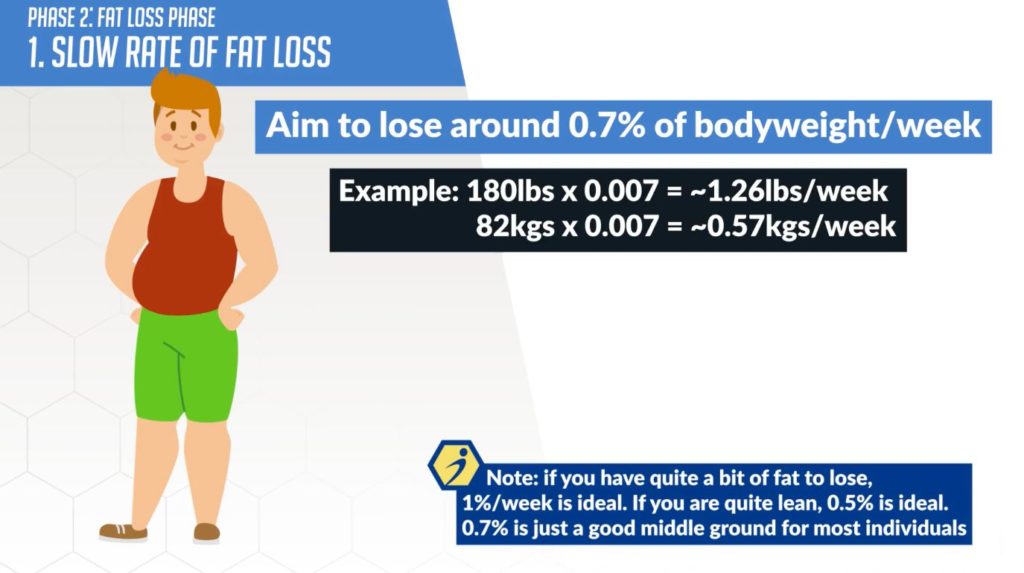
Intermittent Dieting
Next, we want to use an approach called intermittent dieting. I have covered this in a previous article. But essentially after every 6-8 weeks or so of dieting, you want to break this up with what’s called a diet break. This is where you eat at maintenance calories for a week or two. Admittedly, research regarding this is still very preliminary. But it does suggest that diet breaks may help:
- Reverse some of the metabolic adaptations you experience from your weeks of dieting
- Potentially minimize the metabolic adaptations going forward, AND
- Prepare you for your next phase of dieting
Not to mention, it can also help out with better adherence over the course of the diet. In fact, I would even recommend that after you lose a considerable amount of weight, take a break from dieting altogether for a little while and just focus on maintaining your weight. Remember, it’s about life long results when it comes to how to diet to lose fat for good. So don’t be afraid to take it slow.
Eat The Right Foods!
And lastly, you need to ensure that you’re eating a high protein diet (1.8-2.7 g/kg bodyweight) along with high volume, low calorie, filling foods. The sufficient protein will help you burn more calories by just metabolizing it.
And will also help keep you full and maintain or even build muscle mass as you diet down. Also, opting for satiating foods that provide the most bang for your buck in terms of calories will just again help you stay full and satisfied even when your calories do drop quite low in your diet. Which in turn will minimize the risk of you overeating and bingeing when things get tough.
So basically, you apply these 3 steps until you’ve successfully leaned down to the level of body fat that you’re satisfied with.
Not sure how this applies to your diet plan? Don't worry. Our 3-on-1 coaching program can help. You will not only have a dietitian to customize your nutrition plan, but also a coach to focus on your training plans - plus, there's me to answer your questions every month! You'll achieve your dream physique in record-breaking time. Sounds good? Let's get started then:
Click the button below to find out more about the 3-on-1 coaching program:
↓
Phase 3: Reverse
Then, once you do so it’s time to transition to phase 3. Now, this phase is where most people screw everything up. And is why so many people end up re-gaining all the fat they lost. Because during phase 2 where you’re in a calorie deficit and gradually stripping off body fat for weeks and weeks, your body adapts. It gradually slows down its metabolism to try to fight back. Meaning that by the end of phase 2, your maintenance calories will be considerably lower than they were in the beginning.
Stick To A Reverse Dieting Plan
And one option to do so is with something called a reverse diet. Where immediately after your diet, you bump your calories back up to your new, lower maintenance levels to get out of the dieting phase. Then, from here, you basically experiment with:
- Very slowly adding calories into your diet AND/OR
- Tapering down your cardio levels on a weekly basis
...While keeping a close eye on your weight. The effect does seem to vary individually. But oftentimes, what happens is even though you’re adding more and more calories back into your diet, your body counteracts this. How? By essentially getting out of that “dieting” mindset. It tends to start burning more calories through subconscious increases in daily activity, or NEAT to slowly bump up your metabolism.
So by the end of this process, you’ll:
- Still have successfully kept off most or all of the fat that you lost
- Feel more energized and stronger in the gym AND
- Eating considerably more calories than you were after you finished your diet. Which should eventually be similar or close to the maintenance calories that you started out your diet at.
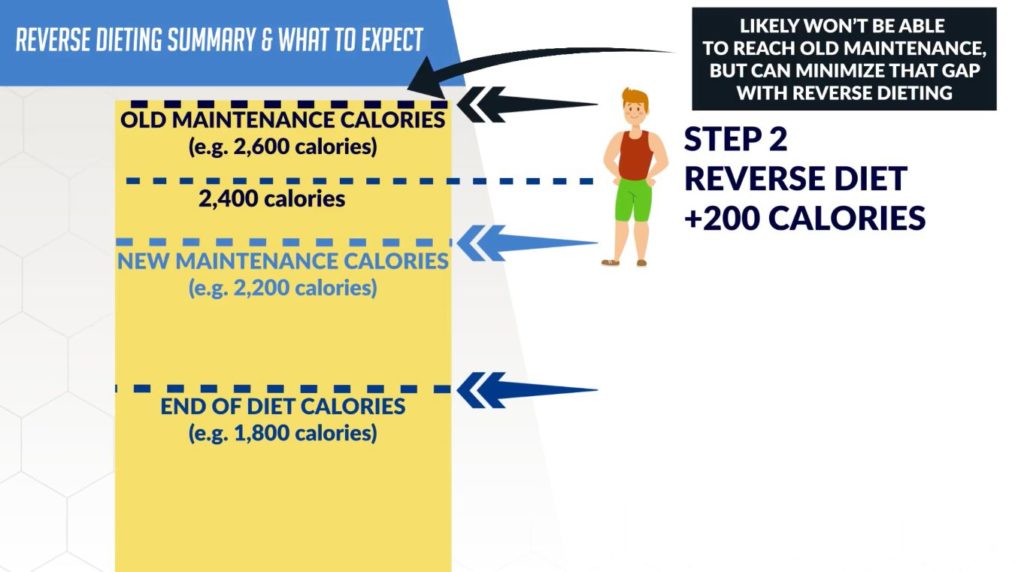
Results May Vary Between Individuals
However, keep in mind that again this does vary individually as people respond to increases in calorie intake differently.
For instance, in one overfeeding study, researchers brought 16 normal-weight subjects into a lab for 8 weeks and served them an excess of 1,000 calories each day. Based on the math, everyone should have gained 16 pounds in 8 weeks. However, in reality, the subjects gained anywhere from under one pound to up to about nine pounds. And the discrepancy and variation between subjects were mainly due to a difference in NEAT.
Meaning that some subjects responded much better to the excess calories by in turn burning more calories subconsciously through fidgeting, postural adjustments, and other subtle movements throughout the day. Whereas others didn’t respond as well.
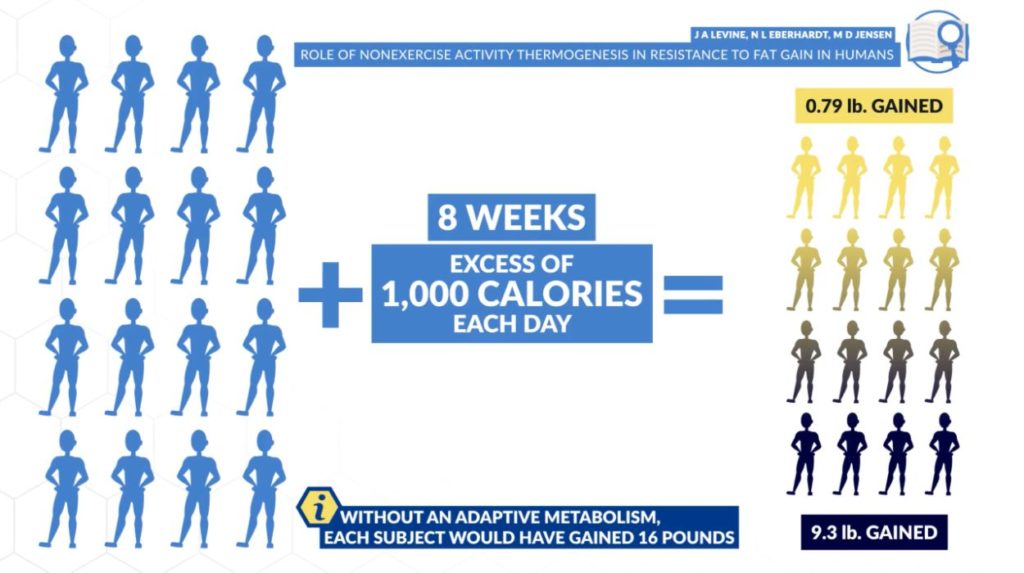
Phase 4: Maintain OR Build
You could either maintain your new physique with relative ease with your new higher calorie intake. Or, you could choose to now focus more on muscle growth. That's if you’re seeking to add some more size to your frame. In which case you’d simply start eating at a calorie surplus to slowly gain muscle over time. And then transition to phase 2 of this plan whenever you’re ready to start leaning down some more.
How To Diet To Lose Fat: Takeaway
Now, this whole process may seem very complex. And you may be feeling as if there’s no hope for you. But that just simply isn’t true! I’m not going to lie, though. It will take time. But by:
- Following these 4 phases
- Remaining patient AND
- Combining this with a solid training and nutrition plan
...Then you can and will be able to strip off that fat for good.
On that note though guys, for those who do need that extra bit of help, my step-by-step programs have been designed to guide you through each of these phases in detail.
It comes fully equipped with software that enables you to actually know exactly what your metabolism is and how its changing week after week as you strip off fat. This allows you to easily break through any plateau you encounter along the way and lean down in the most efficient way possible just like several of our Built With Science members have done with their programs.
To get started today:
Click the button below to take my analysis quiz to discover the best program for you:
↓
I hope you enjoyed this article and now know how to diet to lose fat forever! Also, big thank you to Eric Trexler here for his help with this article. You can give him a follow at @trexlerfitness. Don’t forget to give me a follow and connect with me on Instagram, Facebook, and Youtube as well, in order to stay up to date with my content.


